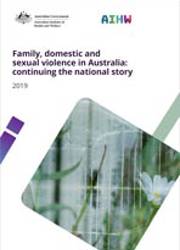National Homicide Monitoring Program (NHMP)
First year: July 1989
Latest year: 2015–16
Frequency: Ongoing
Year in this publication: 2014–15 to 2015–16
Size: All homicides
Methodology: Administrative data
Geography: National
Purpose/description
Homicide is among the most serious of all crimes. Preventing homicide and other lethal violence remains a key priority for Australian criminal justice and law enforcement agencies. The National Homicide Monitoring Program (NHMP) and its collection of data is Australia’s national system that monitors homicide rates, undertakes detailed analysis of homicide types and trends, and communicates this to stakeholders including police, government and non-government organisations, and the public.
Scope and coverage
The NHMP collects data on the following:
- all cases resulting in a person or persons being charged with murder or manslaughter. This excludes driving-related fatalities except those that immediately followed a criminal event such as armed robbery or motor vehicle theft, or which resulted in a charge of murder or manslaughter being laid
- all murder-suicides classed as murder by police
- all other deaths classed as homicides by police, including infanticides, whether or not an offender was apprehended.
The NHMP draws on two key sources of data:
- offence records obtained from each Australian state and territory police service and supplemented, where necessary, with information provided directly by investigating police officers and/or associated staff
- state coronial records such as toxicology and post-mortem reports. The National Coronial Information System (NCIS) has allowed coronial findings, including toxicology and autopsy reports, to be accessed online since 1 July 2001. Prior to 2001, the AIC accessed paper-based coroners files for the period 1 July 1996 to 30 June 2001.
FDSV definitions
Homicide incidents are classified into categories according to the victim(s) and offender’s principal relationship. The categories for a domestic homicide incident – incidents involving the death of a family member or other person in a domestic relationship—include:
- intimate partner homicide, where the victim and offender have a current or former intimate relationship, including same-sex and extramarital relationships;
- filicide, where a custodial or non-custodial parent (or step-parent) kills a child (including infanticide, which is defined as the killing of a child under one year of age);
- parricide, where a child kills a custodial or non-custodial parent or step-parent;
- siblicide, where one sibling kills another; and
- other family homicide – where the victim and offender are related, but not in one of the ways described above (for example, they are cousins, grandparent/grandchild etc.).
For more information, visit National Homicide Monitoring Program.



